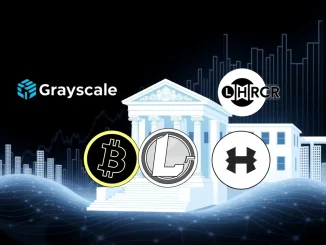
The world of digital assets is buzzing with excitement, and for good reason. On July 18, U.S. spot Ethereum ETFs witnessed an impressive combined net inflow of $404.54 million. This significant milestone marks the eleventh consecutive trading day of positive flows, a clear indicator of growing confidence and liquidity in the Ethereum ecosystem. If you’re invested in cryptocurrencies or simply curious about their mainstream integration, these numbers offer a compelling narrative.
Understanding the Power of Spot Ethereum ETFs
Before diving deeper into the recent surge, let’s quickly recap what spot Ethereum ETFs are and why they matter. Simply put, a spot Ethereum ETF is an investment vehicle that allows investors to gain exposure to Ethereum’s price movements without directly owning the cryptocurrency. This structure simplifies investment, making it accessible to a broader range of traditional investors and institutions who might otherwise be hesitant to navigate direct crypto purchases.
Key aspects of these ETFs:
- Accessibility: They trade on traditional stock exchanges, making them easy to buy and sell through standard brokerage accounts.
- Regulation: Being regulated financial products, they offer a layer of investor protection and legitimacy often missing in direct crypto markets.
- Liquidity: High trading volumes contribute to better liquidity, allowing for easier entry and exit from positions.
- Diversification: They offer a new avenue for portfolio diversification, blending traditional finance with the innovative crypto space.
The Inflow Avalanche: What Do These ETH Inflows Tell Us?
The $404.54 million in net inflows on July 18 is not just a number; it’s a powerful statement. Following ten prior days of positive movements, this eleventh consecutive day of substantial ETH inflows underscores a robust and sustained demand for Ethereum exposure through regulated channels. This consistent positive trend suggests a shift in investor sentiment, moving from cautious observation to active participation.
Consider the breakdown of these inflows:
| ETF Ticker | Issuer | Net Inflow/Outflow (July 18) |
|---|---|---|
| ETHA | BlackRock | $396.96 million (Inflow) |
| Mini ETH | Grayscale | $65.25 million (Inflow) |
| ETHW | Bitwise | $13.03 million (Inflow) |
| ETHV | VanEck | $2.61 million (Inflow) |
| FETH | Fidelity | ($45.39 million) (Outflow) |
| ETHE | Grayscale | ($27.92 million) (Outflow) |
The vast majority of the inflows were concentrated in a few key players, highlighting the market’s preference for established and trusted names.
BlackRock ETHA: Leading the Charge Towards Institutional Adoption
Unsurprisingly, BlackRock ETHA emerged as the dominant force, attracting a staggering $396.96 million in inflows. This figure alone accounts for nearly 98% of the total net inflows for the day. BlackRock’s significant market presence and reputation in traditional finance likely play a crucial role in attracting substantial capital. Their success with Bitcoin ETFs set a precedent, and their Ethereum offering appears to be following a similar trajectory.
BlackRock’s aggressive accumulation of ETH through its ETF signifies a powerful vote of confidence from one of the world’s largest asset managers. This isn’t just about a single day’s performance; it’s about a long-term strategy to integrate digital assets into mainstream investment portfolios. This trend is a strong indicator of burgeoning institutional adoption, moving Ethereum beyond niche crypto circles into the global financial spotlight.
A Closer Look at the Contradictory Flows: Fidelity and Grayscale’s ETHE
While most ETFs saw inflows, Fidelity’s FETH and Grayscale’s ETHE experienced net outflows of $45.39 million and $27.92 million, respectively. This might seem counterintuitive given the overall positive trend, but there are plausible explanations:
- Grayscale ETHE’s Transition: Similar to what happened with Grayscale’s Bitcoin Trust (GBTC) converting to a spot ETF, ETHE was an older trust structure that typically traded at a discount or premium to its underlying assets. Now that spot Ethereum ETFs are available, investors might be moving their capital from the less efficient ETHE to the more liquid and often lower-fee spot ETF alternatives, including Grayscale’s own mini ETH product. This is a natural arbitrage play.
- Portfolio Rebalancing: Institutional investors constantly rebalance their portfolios. Outflows from one fund might simply be capital redeployed into another, potentially even into other Ethereum-related products, or even to lock in profits after a period of positive performance.
- Fee Structures: Newer spot ETFs often come with more competitive fee structures compared to older trust products, incentivizing a shift in capital.
These outflows, while notable, do not diminish the overall positive sentiment. Instead, they reflect a market maturing and optimizing its investment vehicles.
What Does This Mean for the Broader Crypto Market?
The consistent inflows into Ethereum ETFs have significant implications for the entire crypto market. Ethereum is the second-largest cryptocurrency by market capitalization and forms the backbone of decentralized finance (DeFi), NFTs, and a vast ecosystem of decentralized applications (dApps). Increased institutional exposure to ETH through ETFs can lead to several positive ripple effects:
- Price Stability: Large, consistent inflows can contribute to price stability and potentially upward pressure on Ethereum’s value, as more capital is locked into the asset.
- Enhanced Legitimacy: The approval and subsequent success of spot Ethereum ETFs further legitimizes the entire crypto asset class in the eyes of traditional finance.
- Increased Liquidity: More capital flowing into the ecosystem generally improves market liquidity, making it easier for large trades to occur without significant price impact.
- Broader Investment Opportunities: The success of ETH ETFs could pave the way for other altcoin ETFs, opening up new regulated investment avenues for a wider range of digital assets.
This trend suggests that the integration of crypto into traditional financial systems is not just a passing fad but a foundational shift.
Looking Ahead: What’s Next for Ethereum and Institutional Adoption?
The journey for Ethereum ETFs is still relatively new, but the initial performance is remarkably strong. The eleven consecutive days of positive inflows signal robust demand that could continue to grow. Future developments to watch include:
- Continued Accumulation: Will BlackRock and other ETF issuers continue their rapid accumulation of ETH? This will be a key indicator of sustained institutional interest.
- Regulatory Landscape: While the ETFs are approved, the broader regulatory environment for cryptocurrencies continues to evolve. Clearer regulations could further boost confidence.
- Market Volatility: The crypto market is known for its volatility. While ETFs offer a more regulated path, they are still tied to the underlying asset’s price fluctuations.
- Product Innovation: Could we see more sophisticated Ethereum-based financial products emerge, building on the success of these spot ETFs?
For investors, these developments present both opportunities and considerations. While the ease of access through ETFs is a benefit, understanding the underlying asset and market dynamics remains crucial.
A New Era for Ethereum
The consistent and substantial inflows into U.S. spot Ethereum ETFs, particularly the overwhelming dominance of BlackRock ETHA, mark a pivotal moment for Ethereum and the broader cryptocurrency landscape. It signifies a growing acceptance of digital assets within traditional finance and underscores the increasing maturity of the crypto market. As institutional players continue to embrace Ethereum through these regulated investment vehicles, the path towards mainstream adoption appears clearer and more robust than ever before. This is not just about daily inflows; it’s about the long-term transformation of how investors engage with the future of finance.



